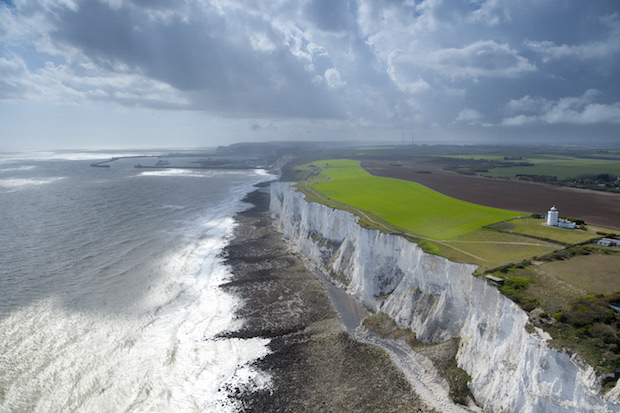The White Cliffs of Dover are, arguably, one of Britain’s most famous sights – immortalised of course by Dame Vera Lynn. So no wonder, then, that when the National Trust decided to launch a fundraising campaign to help them raise £1 million to secure a 700,000 square metre area of land on top of the cliffs, Dame Vera was chosen as the person to front the campaign.
The National Trust already owns just under a mile of the White Cliffs of Dover, between the South Foreland lighthouse and Langdon Cliffs, which they bought in 2012. But at the beginning of September, after learning that the landowner of the area directly behind the cliffs was planning to sell the land and worried that it might end up in the hands of developers, the trust launched an urgent appeal to enable them to buy the plot of land themselves.
Over 17,500 people donated to the campaign, with the public’s £1 million contribution including money raised by players of the People’s Postcode Lottery. The trust themselves covered over half the purchase price with the help of legacy funds, but they needed the extra £1 million by 22 September in order to secure the purchase.
The success of it just goes to show how certain ‘national icons’, as the trust brands the cliffs, can really motivate the British public into handing over their hard-earned cash. Meanwhile, the trust is also asking for donations to fund a new roof at The Vyne, a Tudor palace near Basingstoke, which will cost £5.4 million. Unlike the White Cliffs appeal, this one hasn’t caught the public’s attention, and the appeal has been running for over a year.
The National Trust is already the UK’s largest private landowner, and recently announced that their membership numbers had reached a record five million for the first time. These members contribute around £200 million of the trust’s annual income of £522 million. It’s interesting though that despite what appears to be large income (though of course maintaining their properties and land costs vast amounts of money), the trust still depends on appeals such as the White Cliffs one.
The National Trust does also have its own investment portfolio worth over £1 billion. The trust says that 80% of these investments are ‘restricted’, so can only be spent on specific projects, while they also want to keep ‘a proportion of funds as general reserves’. That’s fair enough; it would be far from ideal if the National Trust were to go bankrupt.
If the White Cliffs of Dover have been saved from development by the National Trust – and members of the public are willing to donate money towards the purchase – that’s no bad thing. But isn’t it slightly unfair for the trust to paint a picture of desperately needing help to save the cliffs when surely, if push came to shove, they could find the funds themselves?







Comments